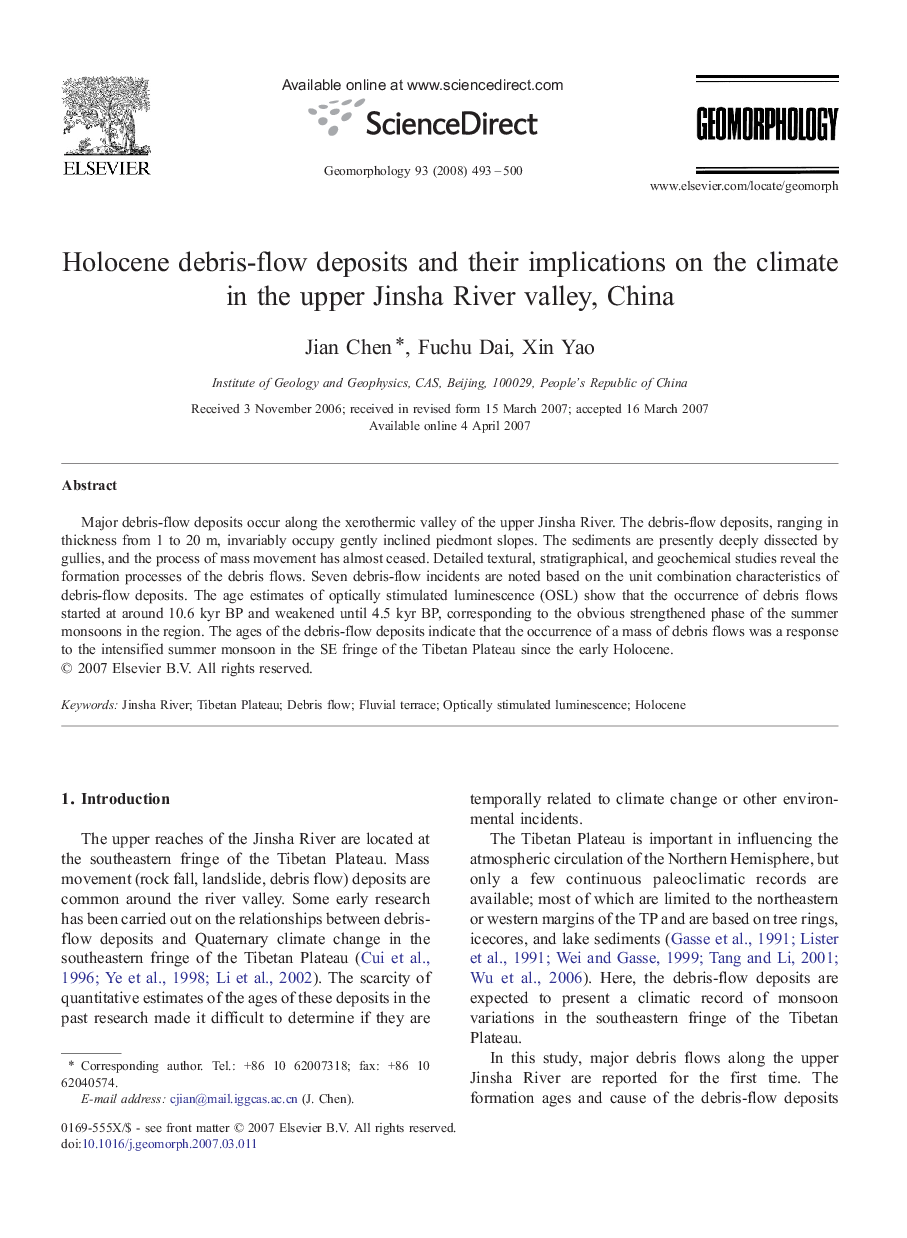| Article ID | Journal | Published Year | Pages | File Type |
|---|---|---|---|---|
| 4686909 | Geomorphology | 2008 | 8 Pages |
Major debris-flow deposits occur along the xerothermic valley of the upper Jinsha River. The debris-flow deposits, ranging in thickness from 1 to 20 m, invariably occupy gently inclined piedmont slopes. The sediments are presently deeply dissected by gullies, and the process of mass movement has almost ceased. Detailed textural, stratigraphical, and geochemical studies reveal the formation processes of the debris flows. Seven debris-flow incidents are noted based on the unit combination characteristics of debris-flow deposits. The age estimates of optically stimulated luminescence (OSL) show that the occurrence of debris flows started at around 10.6 kyr BP and weakened until 4.5 kyr BP, corresponding to the obvious strengthened phase of the summer monsoons in the region. The ages of the debris-flow deposits indicate that the occurrence of a mass of debris flows was a response to the intensified summer monsoon in the SE fringe of the Tibetan Plateau since the early Holocene.
